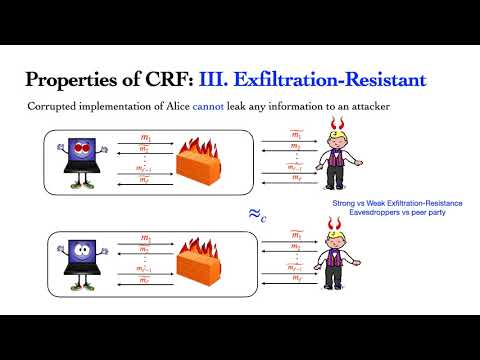CryptoDB
Reverse Firewalls for Actively Secure MPCs
| Authors: |
|
|---|---|
| Download: |
|
| Conference: | CRYPTO 2020 |
| Abstract: | Reverse firewalls were introduced at Eurocrypt 2015 by Miro-nov and Stephens-Davidowitz, as a method for protecting cryptographic protocols against attacks on the devices of the honest parties. In a nutshell: a reverse firewall is placed outside of a device and its goal is to ``sanitize'' the messages sent by it, in such a way that a malicious device cannot leak its secrets to the outside world. It is typically assumed that the cryptographic devices are attacked in a ``functionality-preserving way'' (i.e.~informally speaking, the functionality of the protocol remains unchanged under this attacks). In their paper, Mironov and Stephens-Davidowitz construct a protocol for passively-secure two-party computations with firewalls, leaving extension of this result to stronger models as an open question. In this paper, we address this problem by constructing a protocol for secure computation with firewalls that has two main advantages over the original protocol from Eurocrypt 2015. Firstly, it is a \emph{multi}party computation protocol (i.e.~it works for an arbitrary number $n$ of the parties, and not just for $2$). Secondly, it is secure in much stronger corruption settings, namely in the \emph{actively corruption model}. More precisely: we consider an adversary that can fully corrupt up to $n-1$ parties, while the remaining parties are corrupt in a functionality-preserving way. Our core techniques are: malleable commitments and malleable non-interactive zero-knowledge, which in particular allow us to create a novel protocol for multiparty augmented coin-tossing into the well with reverse firewalls (that is based on a protocol of Lindell from Crypto 2001). |
Video from CRYPTO 2020
BibTeX
@inproceedings{crypto-2020-30530,
title={Reverse Firewalls for Actively Secure MPCs},
publisher={Springer-Verlag},
doi={10.1007/978-3-030-56880-1_26},
author={Suvradip Chakraborty and Stefan Dziembowski and Jesper Buus Nielsen},
year=2020
}

